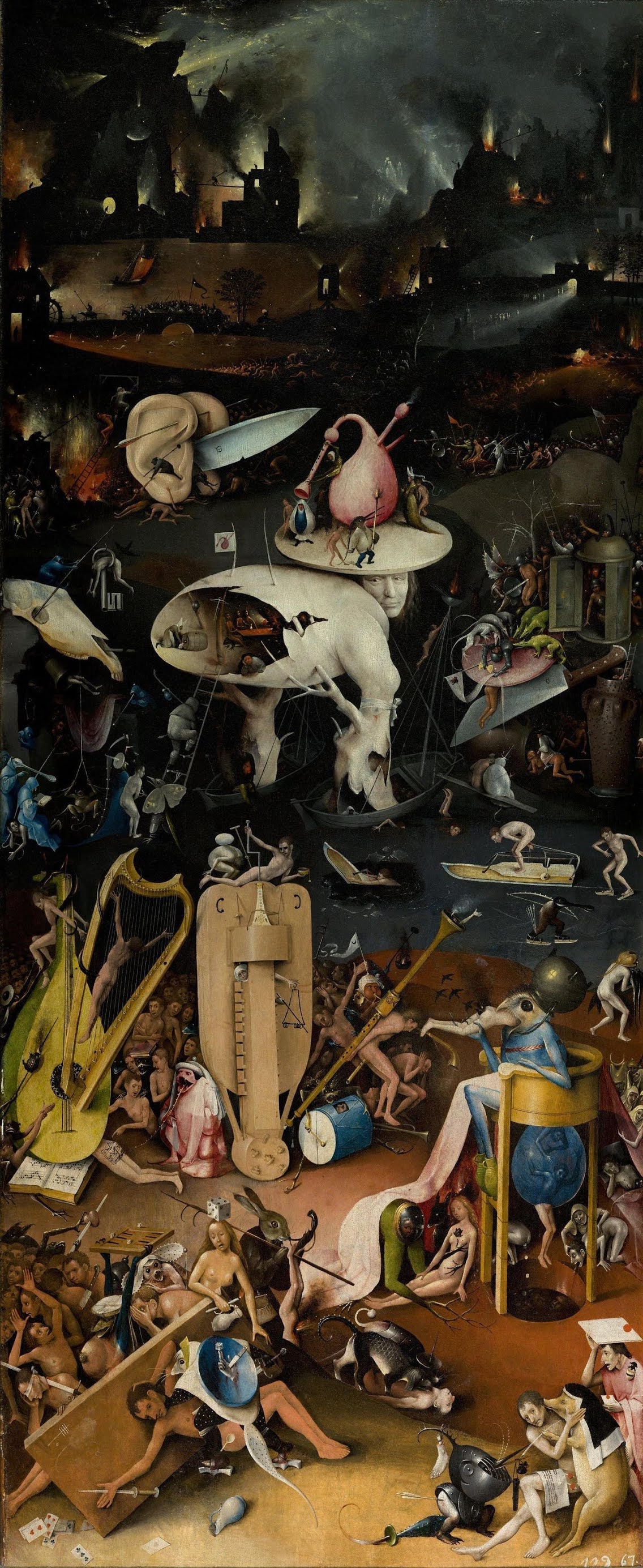Satan is a Job Description
Is this horned, red-skinned monster with a pitchfork ruling hell truly the great enemy of God envisioned by the writers of the Biblical texts?
The short answer: no, not really.
In the Hebrew Bible, God’s greatest enemies are not fallen angels commanding armies of demons, nor even the gods of other nations, but, rather, human beings...PEOPLE.
It isn’t the devil that spreads evil across the face of creation—it is humankind. Other than human beings, God has no nemesis, nor are there malevolent spiritual forces not under his authority. God is ultimately a god of justice. He is behind the good and the bad, behind the blessings and the curses. It is within this divine court of justice and retribution that Satan has his origins.
The Hebrew word 'satan', meaning “accuser” or “adversary,” occurs several times throughout the Hebrew Bible and refers to enemies both human and celestial alike. When referring to the celestial adversary, the word is typically accompanied by the definite article. He is ha-satan—the Accuser—and it is a job description rather than a proper name.
From the Accuser’s appearances in the Books of Job and Zechariah, it seems that the job entails calling attention to the unworthiness of mankind. The Accuser is essentially the prosecuting attorney of the divine court of God, and part of his job includes collecting evidence to prove his cases. With this bit of knowledge in mind, it isn’t difficult to envision the various “outcries against sin,” such as that against Sodom and Gomorrah (Genesis 18:20–21), as the voice of the Accuser.
Satan’s role in the New Testament, though highly expanded, has much more in common with the Accuser of the Hebrew Bible than the commander of the armies of darkness that is typically portrayed in the Dead Sea Scrolls. Even though he is given such lofty titles as “the ruler of this world” (John 12:31), “father of lies” (John 8:44), “god of this world” (2 Corinthians 4:4), “ruler of the power of the air” (Ephesians 2:2), and Beelzebul, “ruler of the demons” (Matthew 10:25; Mark 3:22; Luke 11:15), Satan is essentially treated as nothing more than a glorified prison warden who has been corrupted by his own power. Throughout the Gospels, Satan’s “kingdom” is never considered to be a burning underworld full of the tormented dead, but, rather, is equated with the bondage of sin and the curses brought upon humanity for acts of unrighteousness. According to Jesus (Matthew 12:29; Mark 3:27; Luke 11:21–22), a “strong man” (Satan) must be bound in order to plunder his house for treasures (humans), and it is clear he viewed his ministry and that of his disciples within this context. All other references to Satan in the New Testament, including those in Revelation, reflect this struggle for spiritual freedom.
Over the course of several centuries of influence from many different cultures, the defeated Accuser of the Christians would go on to appropriate aspects of various divine enemies (Typhon, Hades, Ahriman, Hela, to name but a few) to become the complex mythological monster that was thrown out of heaven at the beginning of time to rule the fiery underworld and torment the souls of the damned. Such a character makes for great movies and Halloween costumes, but would have been virtually unknown to anyone in Biblical times.



Comments
Post a Comment